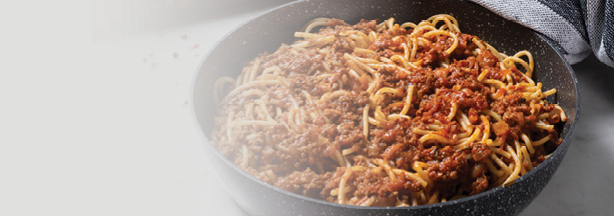The Hemodialysis Diet
What's a hemodialysis diet?
The hemodialysis diet is an eating plan tailored to patients who are on hemodialysis. It’s designed to reduce the amount of fluid and waste that builds up between hemodialysis treatments so that you can feel your best.
What can I eat?
In addition to enjoying a variety of nutritious foods, the hemodialysis diet will introduce a higher amount of high-quality protein into your eating plan. Your dietitian will determine the amount. High-protein foods such as lean meat, poultry, fish and egg whites provide all the essential amino acids your body needs.
What can’t I eat?
Foods containing high amounts of sodium, phosphorus and potassium are restricted. Your dietitian will provide you with food lists that indicate which foods are allowed and which ones you should avoid or limit. You will also limit your fluid intake.
Why do I have to eat this way?
Your dietitian and doctor will strongly recommend you follow the hemodialysis diet, so your dialysis treatments will be effective, you can feel your best, and help reduce the risk of health complications associated with kidney disease and dialysis.
How does the hemodialysis diet help?
Your hemodialysis diet will include a balance of nutrients to help keep your body healthy and strong, while allowing the amount of potassium, phosphorus and sodium your body can safely handle.
Potassium is easily removed by dialysis, but when it builds up in the blood between treatments, it can cause muscle weakness and make your heart stop beating. Certain fruits, vegetables, dairy products and other foods that are high in potassium will need to be restricted from your diet.
Phosphorus is difficult for hemodialysis to filter from the blood so it’s important to limit foods that contain the mineral. Phosphorus can build to high levels in the bloodstream and cause weak bones, heart problems, joint pain or skin ulcers. Your doctor may also prescribe a medicine called a phosphorus binder to help keep phosphorus levels normal.
Sodium causes your body to hold onto more fluid and raises your blood pressure. Eating less sodium and drinking less fluid can help you feel comfortable before and after your dialysis sessions.
What about fluid intake?
Too much fluid gain between hemodialysis sessions can cause discomfort, including swelling, shortness of breath or high blood pressure. Fluid intake is not limited to what you can drink; it’s also hidden in some foods you eat, including gelatin, ice, sherbet, watermelon, sauces and gravies. Your dietitian will give you guidelines to help you monitor your fluid intake.
How long do I have to follow the hemodialysis diet?
You will follow the hemodialysis diet as long as you need hemodialysis. Your dietitian may make some changes to it in order to adjust to your current condition and activity levels.
How do I know if the hemodialysis diet is working?
There are various ways of knowing if the hemodialysis diet is working. One way is by how you feel before and after dialysis.
By following the hemodialysis diet, sticking to your fluid allowance and taking your prescribed medicines, the buildup of waste and fluid will be minimal and you won’t feel ill. Your dialysis treatments won’t have to pull too much fluid from your body and you can avoid feeling weak or dizzy afterwards. Also, you may experience fewer health complications caused by too much phosphorus, sodium and potassium.
Another way to tell that the hemodialysis diet is working is by your target, or “dry”, weight. Your target weight is the weight your doctor thinks you would be when all the extra fluid is removed from your body. You will be weighed before and after your treatment to see how close you are to your target weight. Following your recommended fluid intake will keep you from going too high above your target weight. It’s normal for hemodialysis patients to gain fluid around 3 percent of their body weight between treatments.
Test results are the best way to see how well you’re doing on your diet and hemodialysis. Monthly laboratory tests are done to help your healthcare team evaluate you for anemia, mineral balance, protein nutrition and adequacy of dialysis. DaVita dialysis patients can access their labs on the DaVita Health Portal™, too. Following your diet will help will help keep your test results within an acceptable range.
Your dietitian will also perform a nutrition assessment when you begin hemodialysis and at least yearly. Signs of nutrition problems, changes in weight and energy levels and any other problems will be checked. It will include an individualized nutrition plan of action.
If I follow the hemodialysis diet will my kidneys get better?
Your kidneys are already damaged and cannot be cured or reversed. However, the hemodialysis diet can help you feel your best between dialysis treatments and afterward.
Related articles on DaVita.com

Download
Cookbooks
Access free kidney-friendly cookbooks from DaVita dietitians.
1,000,000+ Enjoyed So Far!

Eating Out
Guides
See kidney-friendly food and drink choices to consider when eating out at your favorite restaurants. Choose from 12 cuisine types.
